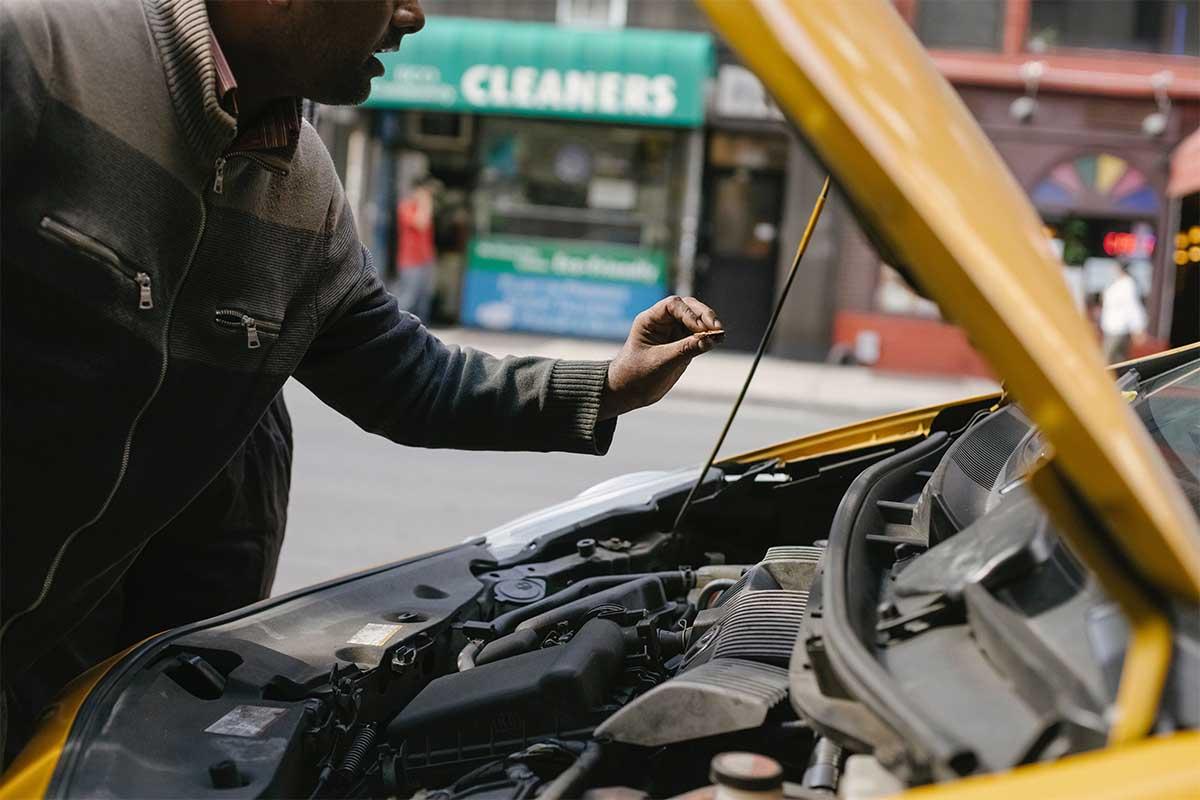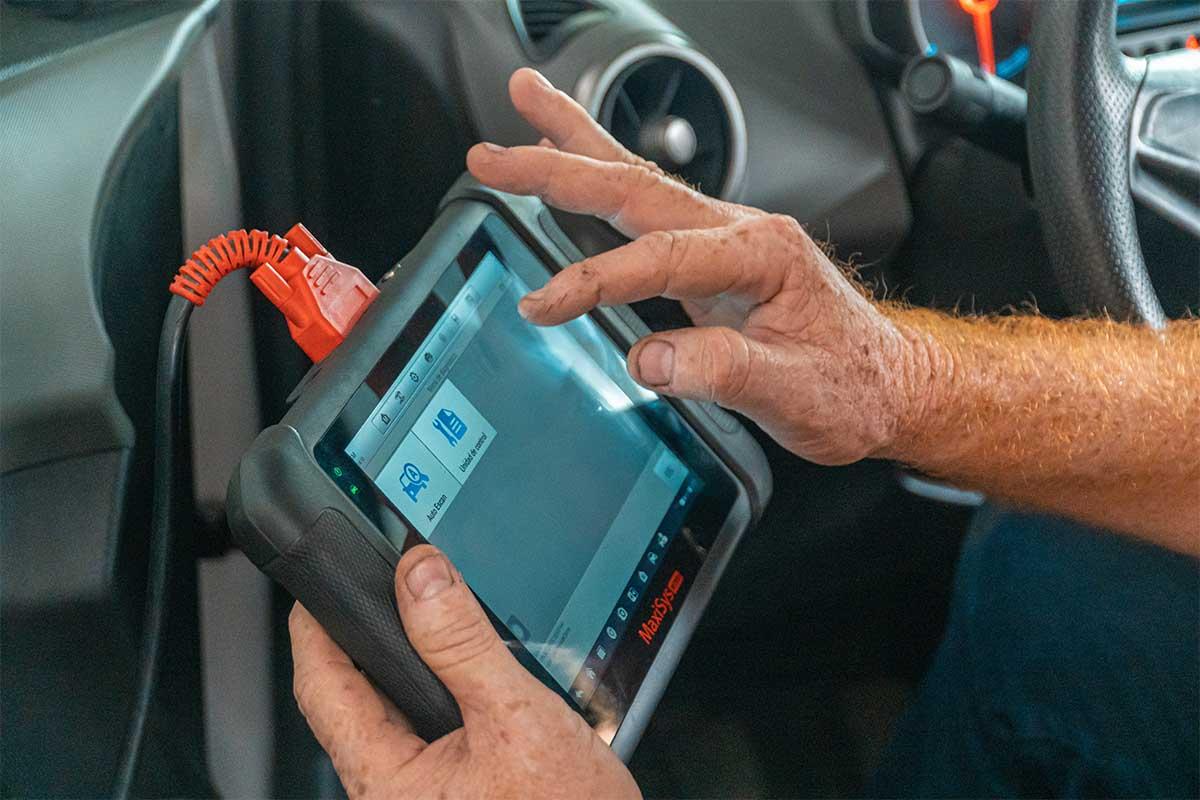For many drivers, driving is a pleasure and a car trip is always welcome. However, there are things that can spoil the good mood and among them is the appearance of warning lights on the vehicle's dashboard. Depending on their color, a major or minor problem is indicated, the red ones warn you of a serious problem that requires immediate intervention. The orange or yellow lights indicate a malfunction that needs to be investigated as soon as possible, and the green, blue or white ones indicate the use of certain vehicle functions.
Contents:
- Check engine - what does it mean and why does check engine appear?
- Check engine light on - causes of check engine light on
- How can you discover what problem the check engine light is signaling?
- What does it mean if the check engine light comes on and goes off?
1. Check engine - what does it mean and why does check engine appear?
What does check engine mean? A check engine light can indicate a number of malfunctions and that is why it gives any driver the creeps.
Why does the check engine light appear? It appears as a symbol or text and is an orange warning light, so it does not indicate a serious problem, but rather signals the need to check the system.
The check engine light scares, especially, novice drivers with its name.
What should you do when the check engine light comes on?

The check engine light does not necessarily indicate a serious problem, but it is very important to try to find the cause, otherwise the risk of a major defect increases considerably. Sometimes, the check engine light comes with other lights, so it is easier to understand where the fault comes from. Otherwise, you can check certain aspects to figure it out. If the vehicle in question is the one you currently drive, then you certainly know what the engine sounds like in optimal parameters. Therefore, it is recommended to listen to the sound of the engine while running and at idle. Open the hood and check the following: possible leaks in the hoses/connections, the wiring and electrical connections of the battery, that the tank caps are properly closed and also, check the dipstick that indicates the oil level. If after checking these possible causes you still have not discovered the source of the problem, it is necessary to go to a service center or use an OBD scanner (if you have one) to find out what the error is.
2. Check engine light on - causes of check engine light on
Why does the check engine light come on? The appearance of the check engine light on the car dashboard is generated by multiple reasons. The most common situations for the check engine light to come on are the following:
- Low battery voltage, battery not charging or malfunctioning;
- The plugs or spark plugs do not work and their wear leads to improper combustion of the fuel;
- Alternator faults that can cause starting problems;
- Clogging of the EGR valve that ensures exhaust gas recirculation;
- Failure of the air flow sensor that measures the amount of air needed to burn the fuel correctly;
- Lambda probe malfunctions, a component responsible for optimizing the fuel combustion process to have the lowest possible emissions;
- The fuel tank cap is not tightened properly or is missing. Its role is to seal the fuel system, so if it fails, there is a risk of fuel evaporation and low pressure in the tank.
3. How can you discover what problem the check engine light is signaling?
To find out a check engine error, it is necessary to diagnose the vehicle. This is done through an OBD scanner that connects to the OBD II connector that transmits data about different sensors in real time. Thus, if a sensor malfunctions or is inactive, a specific error code will result and thus the problem can be identified. Thanks to this scanner, the car sales market is safer, because you can easily check if the vehicle is hiding certain errors.

OBD II is the most widespread car diagnostic standard, there is also OBD I which is an older interface, used in the past. Both have the same role, only OBD II being a newer version provides information with better accuracy. It should be noted that OBD II exists in two connector versions: type A, dedicated to vehicles with an input voltage of 12V and type B, dedicated to vehicles with an input voltage of 24V. The plugs of the two types are different in order not to cause damage to the hardware system, but if you want to buy an OBD II scanner it is recommended to be careful which type of connector fits your car.
4. What does it mean if the check engine light comes on and goes off?
If the warning light is flashing, it means that a problem is being reported that requires the attention of a specialist. Generally, this type of warning light indicates a malfunction of the cylinders or the induction coil and it is recommended that you do not drive the car as long as the warning light is present on the dashboard. In this situation, it is best to call a specialist who can tell you whether it is okay to drive the vehicle to the service station or if a platform is required.
Therefore, it is important not to ignore the signals transmitted through the warning lights even if at first glance they do not indicate serious problems. If we do not intervene in time, minor problems can turn into serious malfunctions which, in addition to lost time and vehicle downtime, can also entail high repair costs.
Photo sources: unsplash.com, pexels.com
